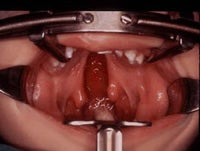Treatment of Cleft Lip & Palate

A cleft palate is initially treated with surgery. This is usually not done right after birth, but is delayed until the child is old enough and big enough for the surgery to be done safely. This is usually when the child is about 7-18 months old, but will depend upon the individual situation. For example, if the child has other health problems, surgery will most likely be delayed.
The major goals of surgery are to:
- Close the gap or hole between the roof of the mouth and the nose
- Reconnect the muscles that make the palate work
- Lengthen the repaired palate so it can function properly
Surgeons use many different techniques to accomplish these goals. The choice of techniques should be discussed between the parents and the surgeon before the surgery.
Are there risks during surgery?
Any surgery has potential complications. The repair of a cleft palate is no different. The major potential problems following surgery include:
- Breathing difficulty due to swelling in the mouth
- Bleeding
- Early or late separation of the repaired palate
- Infection
- Scarring
Many children are admitted to the intensive care unit immediately after surgery for closer observation, in case of bleeding or breathing troubles. Scar tissue may take several months to form. Once present, the scar tissue may prevent the palate muscles from working properly, or it may cause the palate to become too short to close off the passageway from the mouth to the nose.
What can we expect after surgery?
After the palate has been fixed, most children will immediately have an easier time swallowing food and liquids. But in about 1 out of every 5 children, a portion of the repair will split, causing a new hole to form between the nose and mouth. If small, this hole may result in only an occasional minor leakage of fluids into the nose. If large, it can cause significant eating problems and, most importantly, can affect how the child speaks. This hole is called a “fistula”, and may need further surgery to correct.
How will the surgery affect speech?
Because of the importance of the palate in producing normal speech, success of the surgery is judged by how well the child develops speech patterns afterwards. The child should be assessed at yearly intervals by a trained speech and language pathologist. Previous experience has shown that the vast majority of these children will require some speech therapy to train their palate muscles to work properly after surgery. Even with intense speech therapy, studies have shown that in about 1 out of every 4 children, additional surgery will be needed to further correct the palate enough to allow for proper speech production.
Can a cleft palate affect a child’s teeth?
If the cleft happens to involve the upper jaw, the developing teeth may also be affected. Teeth may not grow in properly or some may be missing altogether. Depending upon the severity of the cleft, some children will need orthodontic treatment to correctly line up their teeth, and some may need more surgery to replace the missing bone where the cleft splits the upper jaw bone.
